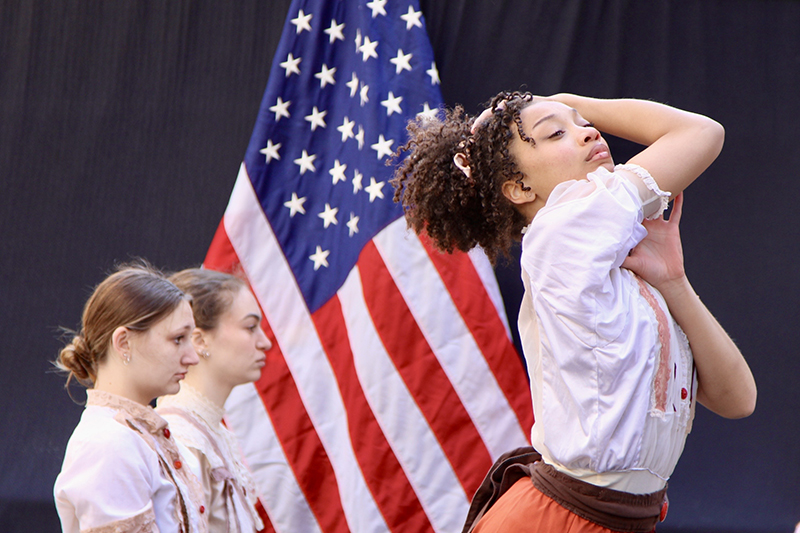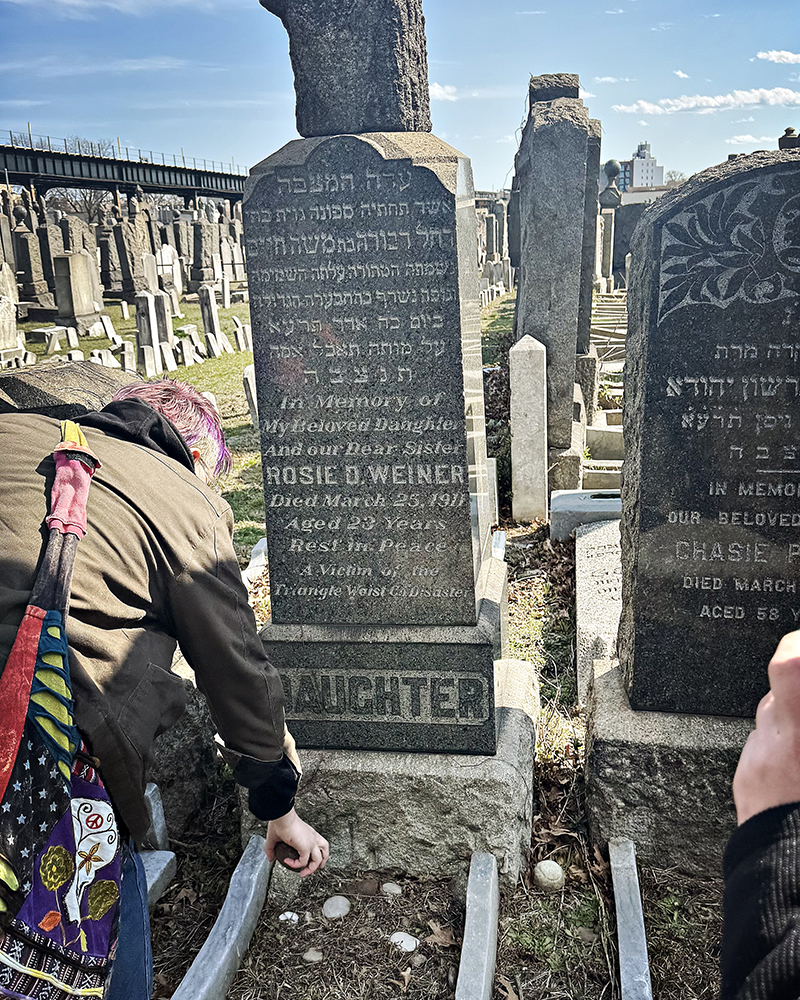
Category: Theatre and Dance

Project 146
June 24, 2025 Written by CAS Communication Staff
On Saturday, March 25, 1911, 146 workers, mostly young immigrant women, died in a factory fire in the Greenwich Village neighborhood of New York City. Although workplace deaths weren’t uncommon in the early years of the 20th century, the Triangle Factory fire inspired labor leaders to fight for better protections and working conditions, as a major reason so many died was that they were locked in rooms on the upper floors, something management did to prevent workers from taking too many breaks.
This March, students from the Department of Theatre and Dance participated in the Triangle Fire Commemoration, held on the 114th anniversary of the tragedy at the site, now known as the Brown Building.
It was the culmination of a year of research and collaboration that resulted in Project 146, a 50-minute choreographic work about the fire created by Denise Murphy-Rohr, assistant professor and director of dance.
“In addition to embodying the traumatic events of the fire through movement, the dancers researched and explored topics around immigration and the immigrant experience, the garment industry in 1911 and today, identity, women in labor, workers rights and the intersection of their lives and the victims lives,” she said.
Students performed an excerpt from the full work at the event, which had been presented on campus earlier in the month.

Tangible history
The itinerary also included a visit to the Lower East Side’s Tenement Museum, which illustrates living conditions for immigrant communities in the 1900s, and Washington Cemetery in Brooklyn, where students paid their respects to 23-year-old fire victim Rose Weiner. Kaitlyn Goblirsch, who graduated in May with a degree in neuroscience and a dance minor, researched Rosie, as well as her sister Katie Weiner, who survived, for Project 146.
Students also participated in artist Ruth Sergal’s Chalk project. Every year on the anniversary of the fire, volunteers go throughout the city to write victim’s names and ages in chalk in front of their former homes.
Sergal describes the project as a “collective action,” that, although it will fade from weather and traffic, insists that individual victims will be remembered year after year, honoring the pivotal role the event holds in the history of labor and workers rights.
Murphy-Rohr explained that having the opportunity to connect to history in real, physical ways makes art more impactful, for the student dancers as well as audiences.
“To perform and embody that work on the very cobblestones, outside the very building where so many lost their lives, was truly a life changing experience for them,” she said.

